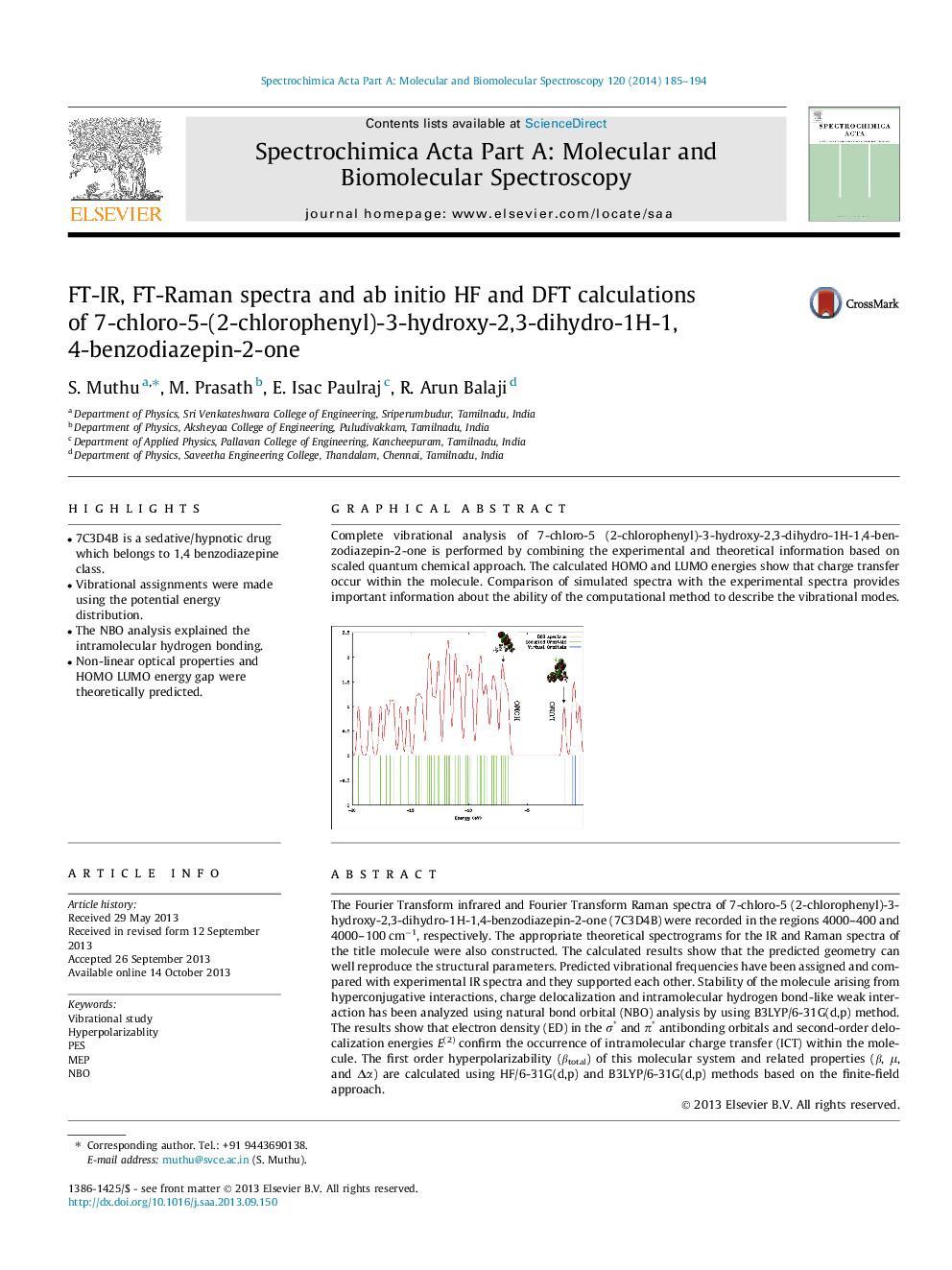| Article ID | Journal | Published Year | Pages | File Type |
|---|---|---|---|---|
| 1230840 | Spectrochimica Acta Part A: Molecular and Biomolecular Spectroscopy | 2014 | 10 Pages |
•7C3D4B is a sedative/hypnotic drug which belongs to 1,4 benzodiazepine class.•Vibrational assignments were made using the potential energy distribution.•The NBO analysis explained the intramolecular hydrogen bonding.•Non-linear optical properties and HOMO LUMO energy gap were theoretically predicted.
The Fourier Transform infrared and Fourier Transform Raman spectra of 7-chloro-5 (2-chlorophenyl)-3-hydroxy-2,3-dihydro-1H-1,4-benzodiazepin-2-one (7C3D4B) were recorded in the regions 4000–400 and 4000–100 cm−1, respectively. The appropriate theoretical spectrograms for the IR and Raman spectra of the title molecule were also constructed. The calculated results show that the predicted geometry can well reproduce the structural parameters. Predicted vibrational frequencies have been assigned and compared with experimental IR spectra and they supported each other. Stability of the molecule arising from hyperconjugative interactions, charge delocalization and intramolecular hydrogen bond-like weak interaction has been analyzed using natural bond orbital (NBO) analysis by using B3LYP/6-31G(d,p) method. The results show that electron density (ED) in the σ* and π* antibonding orbitals and second-order delocalization energies E(2) confirm the occurrence of intramolecular charge transfer (ICT) within the molecule. The first order hyperpolarizability (βtotal) of this molecular system and related properties (β, μ, and Δα) are calculated using HF/6-31G(d,p) and B3LYP/6-31G(d,p) methods based on the finite-field approach.
Graphical abstractComplete vibrational analysis of 7-chloro-5 (2-chlorophenyl)-3-hydroxy-2,3-dihydro-1H-1,4-benzodiazepin-2-one is performed by combining the experimental and theoretical information based on scaled quantum chemical approach. The calculated HOMO and LUMO energies show that charge transfer occur within the molecule. Comparison of simulated spectra with the experimental spectra provides important information about the ability of the computational method to describe the vibrational modes.Figure optionsDownload full-size imageDownload as PowerPoint slide
